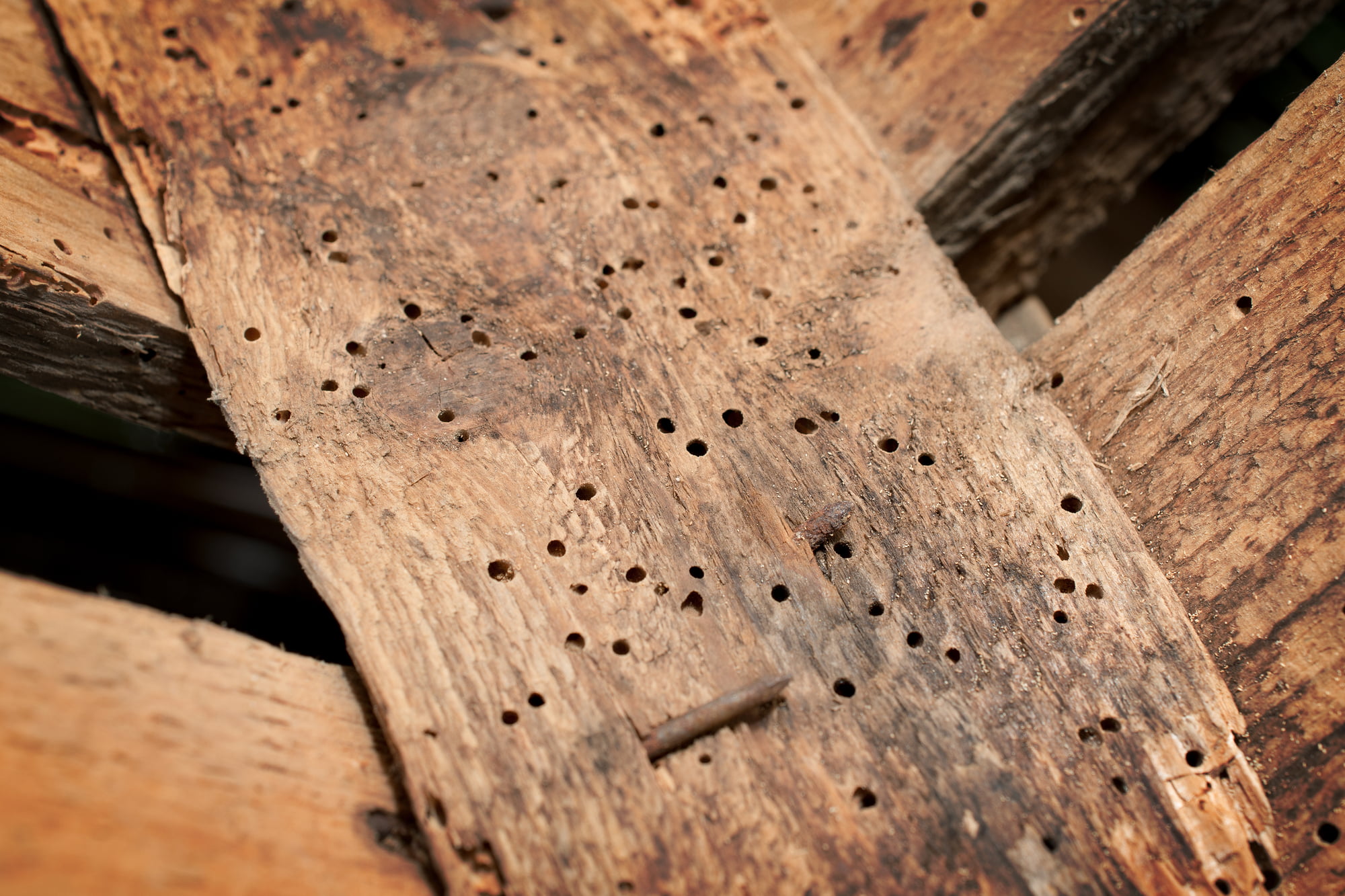Moving house is stressful, and the last thing you would want is to move into your dream home only to find it was riddled with pests like termites and wood borers. That’s why it’s necessary to get a pest inspection prior to purchasing your new home.
When most home buyers or homeowners hear the words termites or wood borers, they tend to panic. It’s not nice to think of an insect taking up residence in your home and destroying the foundations.
But the more you know about wood borers, the different species, where they live and the damage they create, you’ll be better equipped if you’re faced with a borer infestation.
How do I identify wood borers?
Identifying certain species of wood borer can be a little tricky, largely because they do most of their damage in the larvae stages of their life cycle. Once they become beetles, they “bore” their way out of the wood and fly away.
You can identify them by the saw dust they leave around the timber, and the holes they create. The most important questions to answer are:
- What type of borer is responsible?
- How bad is the damage?
- Are the borers still active?
While there are DIY chemicals available for tree infestations, it’s highly recommended to consult a professional if there is extensive or structural damage to your home.
Are wood borers the same as termites?
Borer beetles and termites aren’t the same. Termites are much worse and more capable of causing long-lasting, structural damage.
What are the most common wood boring species in Queensland?
Wood borers are, as Archicentre Australia identifies, “the larval form of different families of beetles.” They make their home just after timber has been cut and is still damp. There are different species of borer beetle in Queensland, including the longicorn and jewel beetles, auger beetles, pinhole beetles and pinworms or weevils and wood moths, which damage unseasoned timber. Two other types – and the ones of most concern – are:
Powderpost Beetles:
These borers live and feed on the sapwood of some hardwoods, but rarely the ‘heartwood’ or core. Regulations in Queensland and New South Wales state that the use of sapwood in construction is fairly limited, however, they can get in joists, mouldings, skirting boards and fences, with the ability to reinfest at times.
Queensland Pine Beetle:
These are more prevalent in the South East and make their homes in hoop or bunya pine. They appear from the underside of flooring and foundations, and may cause more damage (at a slower pace) than other species.
How do you treat borer beetle damage?
You can treat borer beetle damage several ways, depending on the type of damage you have. If your damage is contained to furniture or floorboards, the most efficient and cost-effective treatment is to replace it with another type of timber or new (treated) furniture. Painted or lacquered timber is protected from borer beetles, so can be an effective treatment.
If the infestation is structural, however, you may need more intense chemical treatment. There are DIY treatments available from hardware stores, but it’s best left to the professionals
Is beetle damage a deal-breaker on your new property?
It’s not necessarily a deal-breaker to discover borer beetle damage in a new home or within furniture. Some borers will not cause lasting or structural damage. However, even if this is the case, professional chemical treatments are available. Depending on the extent of the damage, this can be a one-off, or take place over a few treatments.
Uncover borer damage with a professional pest inspection.
Call us on 1800 642 465 or book online.

